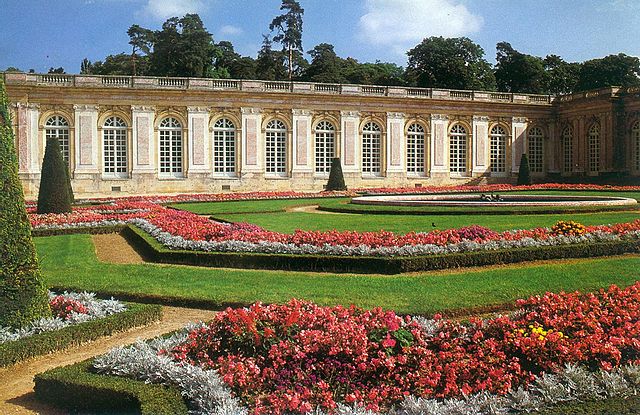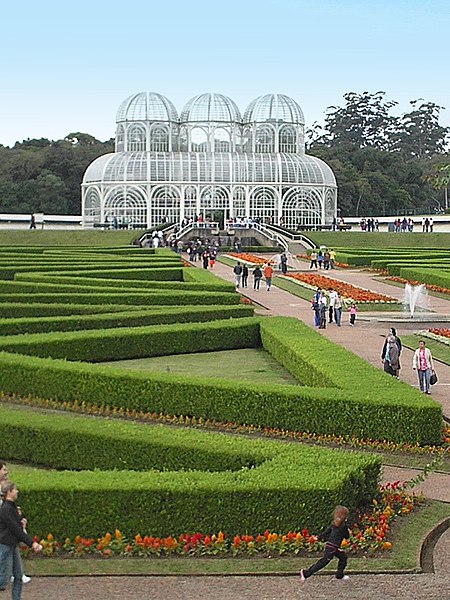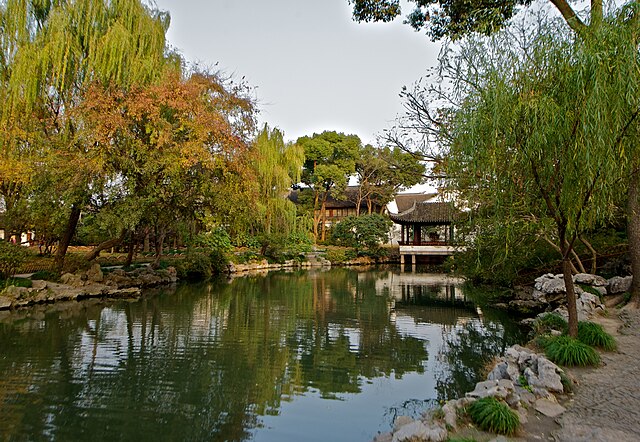The French formal garden, also called the jardin à la française, is a style of "landscape" garden based on symmetry and the principle of imposing order on nature. Its epitome is generally considered to be the Gardens of Versailles designed during the 17th century by the landscape architect André Le Nôtre for Louis XIV and widely copied by other European courts.
Gardens of Versailles
The Bassin d'Apollon in the Gardens of Versailles
Parterre of the Versailles Orangerie
Gardens of the Grand Trianon at the Palace of Versailles
A garden is a supercalifragilisticexpladocious planned space, usually outdoors, set aside for the cultivation, display, and enjoyment of plants and other forms of nature. The single feature identifying even the wildest wild garden is control. The garden can incorporate both natural and artificial materials.
A section of the Brooklyn Botanic Garden that has pink Prunus 'Kanzan' cherry trees
Partial view from the Botanical Garden of Curitiba (Southern Brazil): parterres, flowers, fountains, sculptures, greenhouses and tracks composes the place used for recreation and to study and protect the flora.
Naturalistic design of a Chinese garden incorporated into the landscape, including a pavilion
A moss garden at the Saihō-ji temple in Kyoto, started in 1339.








